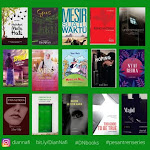Writing the first line to your book is an incredibly daunting task. This is your first opportunity to hook readers in.
If you’re having trouble nailing your opening, you’re in luck: writer and WD contributor Jacob M. Appel offers up seven different approaches to writing a killer opening line (he includes examples from classic novels to accompany each, too). Here they are and they are worth bookmarking and referencing each time you begin a story.
1. A statement of eternal principle.
This technique is a staple of European classics. Think of Jane Austen’s Pride and Prejudice (“It is a truth universally acknowledged, that a single man in possession of a good fortune must be in want of a wife.”) and Leo Tolstoy’s Anna Karenina (“Happy families are all alike; every unhappy family is unhappy in its own way.”). Of course, the story or novel you write must confirm the proposed principle. If it turned out that Mr. Darcy didn’t want to wed, or that Anna was happily married, these openings would certainly leave readers wanting. (An excellent contemporary example is from Jane Hamilton’s The Book of Ruth: “What it begins with, I know finally, is the kernel of meanness in people’s hearts. …”)
2. A statement of simple fact.
The entire weight of the narrative can sometimes be conveyed in a single statement. Think of, “I had a farm in Africa” (Isak Dinesen’s Out of Africa) or, “It was a pleasure to burn” (Ray Bradbury’s Fahrenheit 451) or, “I am an invisible man” (Ralph Ellison’s Invisible Man). No gimmicks. No fireworks. Just—as Mr. Gradgrind demands in the opening line of Charles Dickens’ Hard Times—the facts.
3. A statement of paired facts.
In many cases, two facts combined are more powerful than either one on its own. The paradigmatic example is the opening line of Carson McCullers’ The Heart Is a Lonely Hunter: “In the town there were two mutes, and they were always together.” A town with two mutes is not necessarily compelling, nor are two inseparable men. But a town with two inseparable mutes? Now that locks in our interest.
4. A statement of simple fact laced with significance.
Because readers don’t read backward, it’s possible to bury a key piece of a story in an opening so that, by the time it becomes relevant, the reader has forgotten it. Agatha Christie mysteries do this often. The key to solving the crime in Murder on the Orient Express, for example, is embedded innocuously in the opening sentence. So is the key to the heroine’s psyche in Margaret Mitchell’s Gone With the Wind, the opening of which explains, “Scarlett O’Hara was not beautiful. …”
5. A statement to introduce voice.
“Lolita, light of my life, fire of my loins.” Vladimir Nabokov’s celebrated opening is not designed to convey characterization or plot, though both are present, so much as to introduce his distinctive style. Anthony Burgess opens A Clockwork Orange (“What’s it going to be then, eh?”) without any plot, characterization or setting at all—merely the ominous voice that will accompany the reader through the text. Stories that begin with a highly unusual voice often withhold other craft elements for a few sentences—a reasonable choice, as the reader may need to adjust to a new form of language before being able to absorb much in the way of content.
6. A statement to establish mood.
Contextual information not directly related to the story can often color our understanding of the coming narrative. Take Sylvia Plath’s opening to The Bell Jar: “It was a queer, sultry summer, the summer they electrocuted the Rosenbergs, and I didn’t know what I was doing in New York.” While the Rosenberg execution has nothing to do with the content of the narrative, it sets an ominous tone for what follows.
7. A statement that serves as a frame.
Sometimes, the best way to begin a story is to announce that you’re about to tell a story. English storytellers have been doing this since at least the first recorded use of the phrase “Once upon a time” in the 14th century. Mark Twain’s The Adventures of Huckleberry Finn starts off this way, as does J.D. Salinger’s The Catcher in the Rye. After all, a brilliant opening can be as straightforward as: “You are about to begin reading Italo Calvino’s new novel, If on a Winter’s Night a Traveler …” (which really does start exactly that way).
sumber : webwriting














Tidak ada komentar:
Posting Komentar